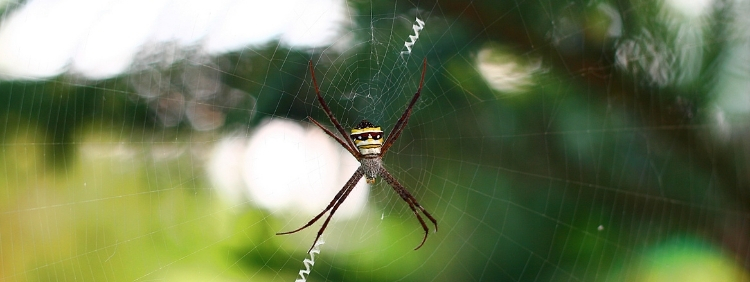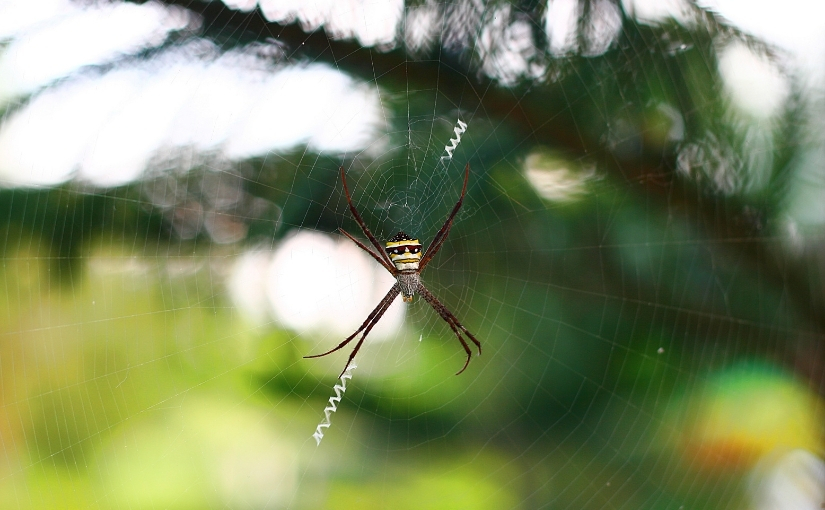
Few people love sharing their spaces with either spiders or insects. Both are tiny, creepy, and potentially hazardous. Taxonomically, however, spiders and insects are entirely separate classes of animals. While both belong to the phylum Arthropoda, spiders have a number of features that make them distinct from all insects. Before you call spider control, here are the main differences between spiders and insects and why they evolved separately.
Arachnids: What Are They?
Arthropods are a phylum of animals that predate humans and other mammals by hundreds of millions of years. In fact, arthropods first developed over 500 million years ago, millions of years before even the first bony fish began to swim in the oceans.
Naturally, with so much time to evolve, arthropods diversified into a staggering array of subgroups. Creatures as different from one another as lobsters, centipedes, crabs, ants, bees, horseshoe crabs, and barnacles are all considered arthropods.
Belonging to a group called arachnids, spiders first emerged in the fossil record around 400 million years ago. Along with spiders, however, came scorpions, ticks, mites, and pseudoscorpions. While arachnids themselves are a relatively diverse group, most have an internal trachea, eight legs, and an unsegmented thorax. Often, however, the best way to find out if a creature is an arachnid is to research it.
Differences Between Arachnids and Insects
Insects are among the most successful of all species and are by far the most diverse. Distinguishing them from arachnids, therefore, can be very difficult. Both insects and arachnids have a stiff exoskeleton and internal structure of tissue and muscles. Though insects and arachnids breathe somewhat differently, you probably won’t be able to tell how a creature breathes just from looking at one.
Most arachnids have eight legs, while most insects have six. There are always exceptions to this rule, however. Caterpillars may appear to have far more than six legs, and certain arachnids also have appendages that are not technically legs.
Often, the simplest way to tell the difference between an insect and an arachnid is to look at the body structure. Insects usually have three segments, including the head, thorax, and abdomen. Arachnids have a cephalothorax, or “head-thorax,” and abdomen only. If this sounds confusing, just picture the difference between a spider and an ant.
Why Are Spiders Different?
Spiders are probably the most successful arachnids of all. While spiders often look similar to one another, their ancient order consists of more than 45,000 species. While there are many subgroups of insects that have become comparably successful, few arachnids have been able to rival spiders in diversity or prevalence. This is part of why so many people think spiders are insects.
How did spiders achieve their success? Spiders are tiny predators that use their webs, fangs, and venom to find food sources. Similar to sharks, spiders have been so effective at overcoming their prey that they haven’t needed to evolve many new adaptations. Why change what works?
What to Do About Spiders in Your Home
Depending on where you live, spiders can either be a serious threat or a minor inconvenience. In some cases, they can even be helpful. Although it is rare for humans to die from venomous spider bites, spiders can pose serious risks to certain sensitive groups. Managing the presence of arachnids in your home, therefore, is important.
If your home is infested with spiders, you can usually find evidence of extensive webbing in affected areas. Such infestations often occur in areas that have been neglected for a long time. If you think you have a serious problem, don’t try to handle it on your own. A Truly Nolen professional can safely handle your unwanted guests and cleanly remove webs and other debris.
